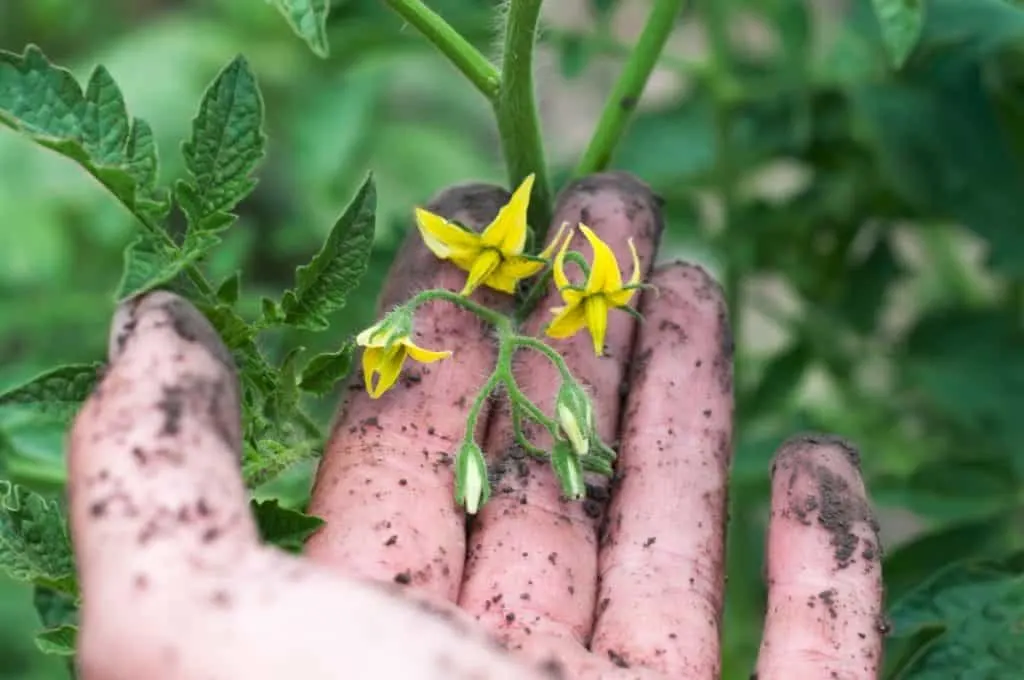Have you struggled with blossom drop or lack of fruit set on your tomato plants, despite trying absolutely everything to resolve the problem?
Well, hand-pollinating might just be your answer.
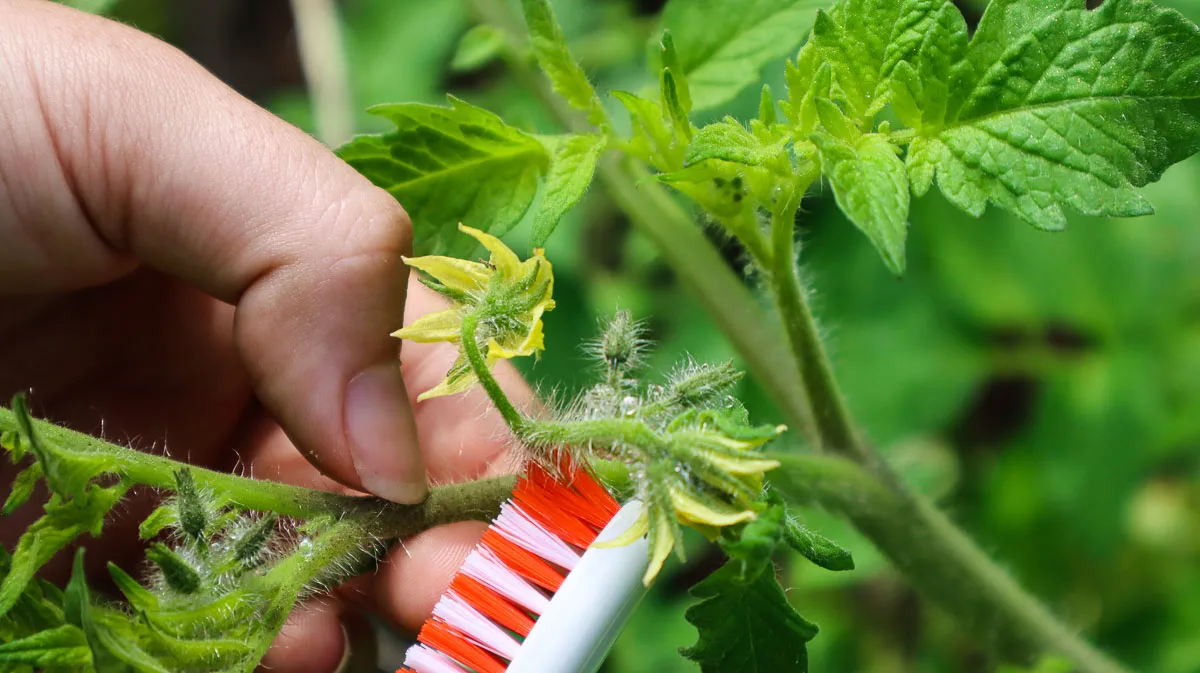
If nature fails to pollinate our tomatoes for reasons out of our hands, we can take control of the process with a few minutes of time and a couple of common household products.
Of all the tomato gardening tasks, this is one of the easiest to complete and the most helpful, so there’s no reason not to give it a go.
Is Hand Pollinating Necessary?
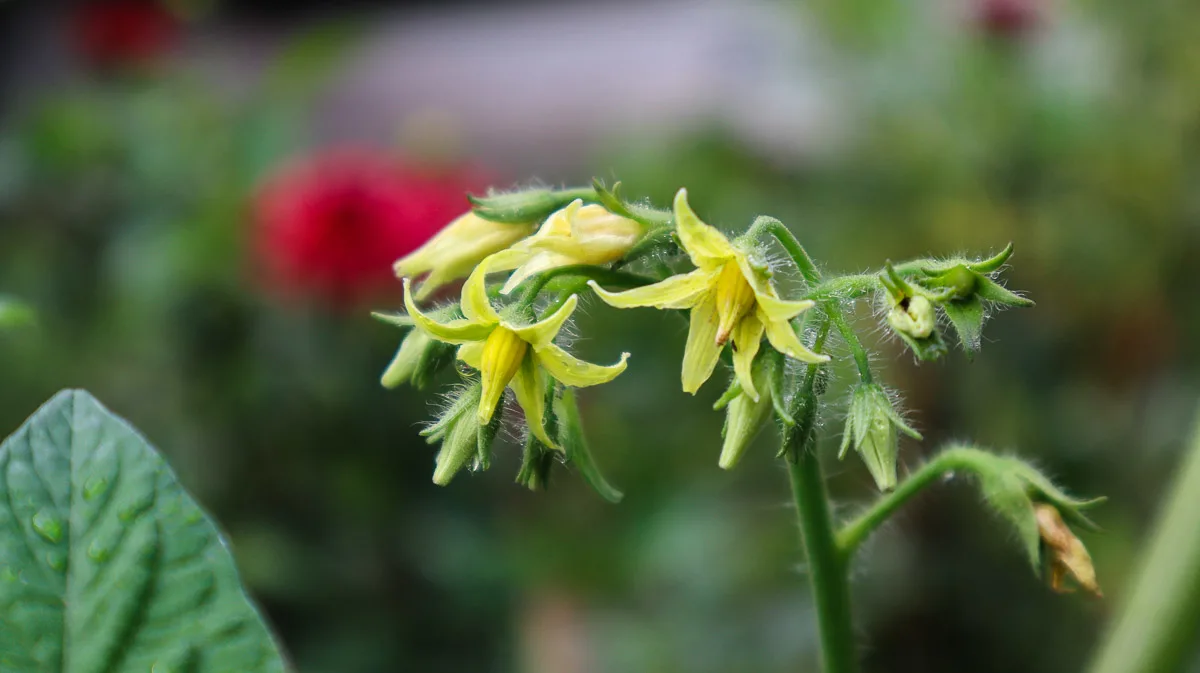
Tomatoes are self-pollinating. Containing both male and female parts – a stamen and a stigma – the pollen simply needs to fall around the plant for pollination to occur. This can be done by a gentle breeze, but studies show the buzzing action of pollinators is most effective.
Tomatoes have thrived for years without the intervention of people, so hand-pollinating is not an absolute must-have. However, in certain situations, it can dramatically increase your harvest, especially if you are struggling with yield.
When growing tomatoes in a greenhouse, for example, you may limit the access pollinators have to your plants. And, growing indoors, there is a lack of both wind and pollinators to facilitate the movement of pollen around the blooms.
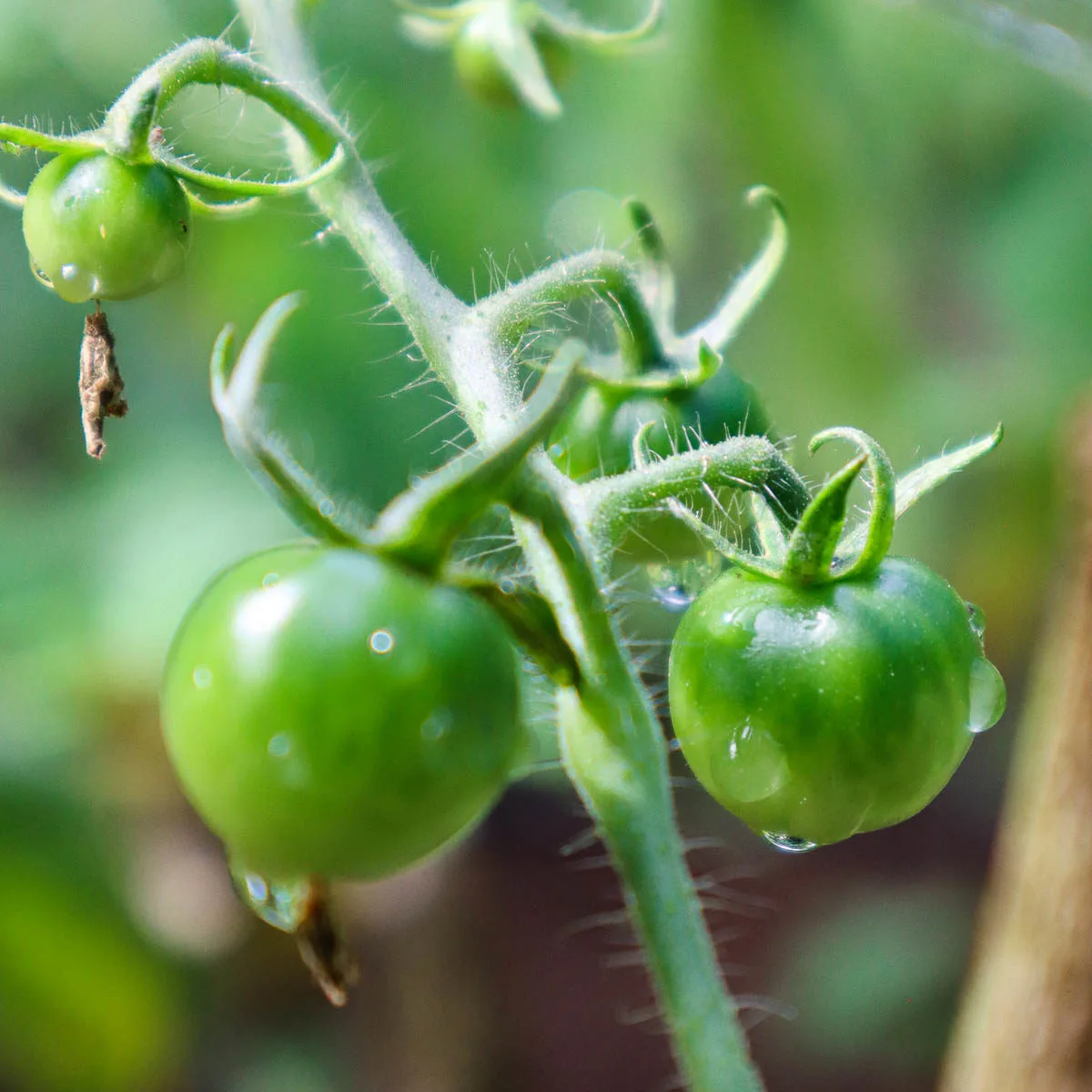
Even when planted outdoors and in the open, pollination may not be as successful as it could be. High temperatures or humidity can cause the pollen to become sticky, stopping it from moving around the plant and lowering pollination rates.
Ultimately, if you’re bogged down by other gardening tasks, you can skip hand pollinating. But, if you want to improve your harvest and have a few extra minutes, it’s a worthwhile endeavor.
Hand pollinate around midday to take advantage of early morning pollen production. Low humidity and warm temperatures are preferred to make the process quicker and more successful
How To Hand Pollinate Tomatoes
There are several ways to hand pollinate tomatoes and luckily, all of them are incredibly easy to do. With just a few basic tools – mostly things you should find around the house – you can increase your yields dramatically.
Shake The Stem
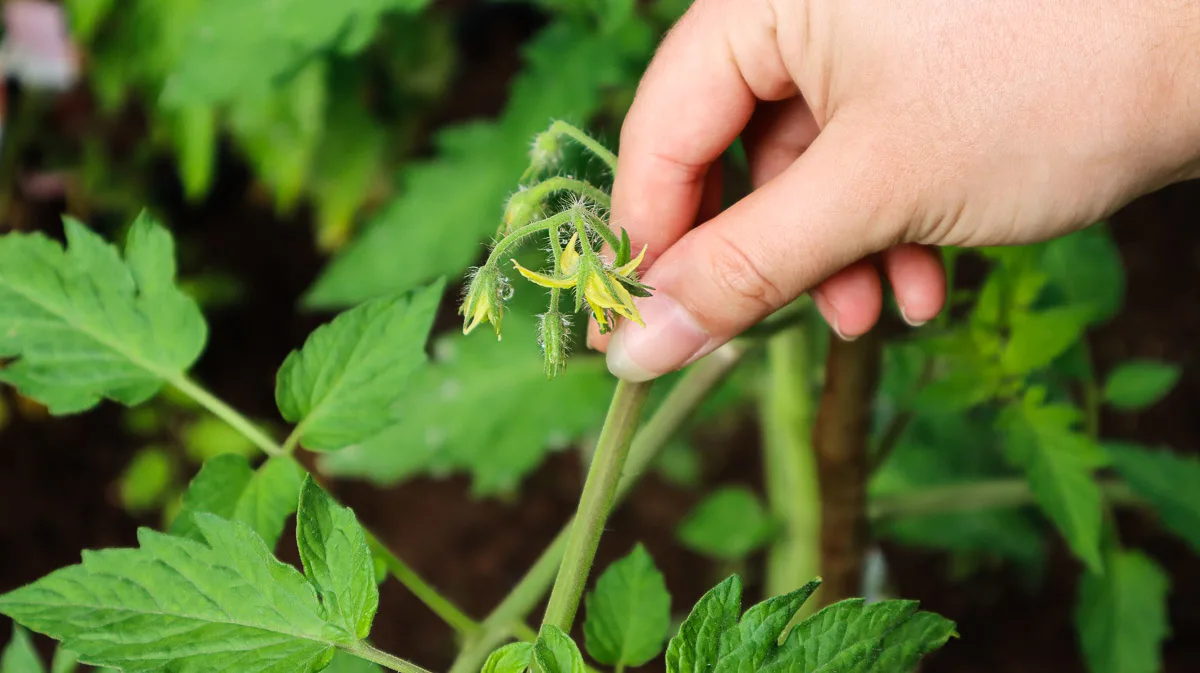
If there is a lack of wind around your tomato plants to facilitate pollination, you can simply replicate that same motion by gently shaking the plants or tapping on the end of the flowers directly. If no pollen is released, use a bit more force by flicking the stems close to the base of the flower.
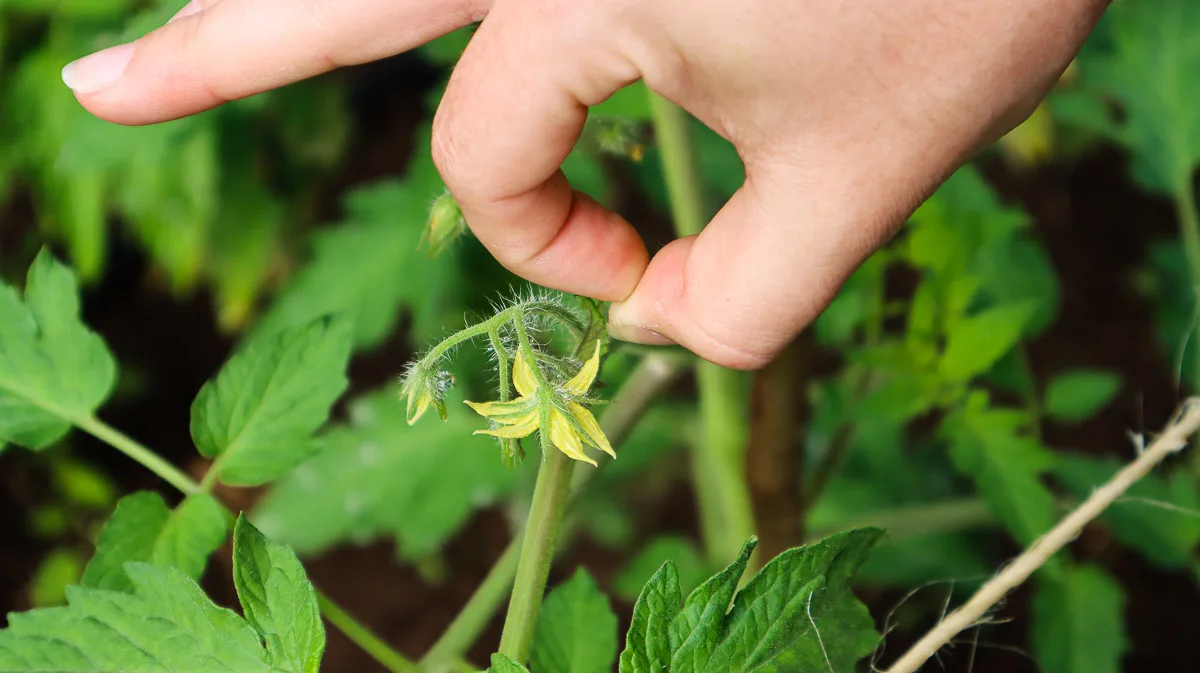
A quick few seconds of vibration is enough to drop any loose pollen around the flower. Do this every couple of days to increase pollination rates before fruit set.
Use A Paintbrush
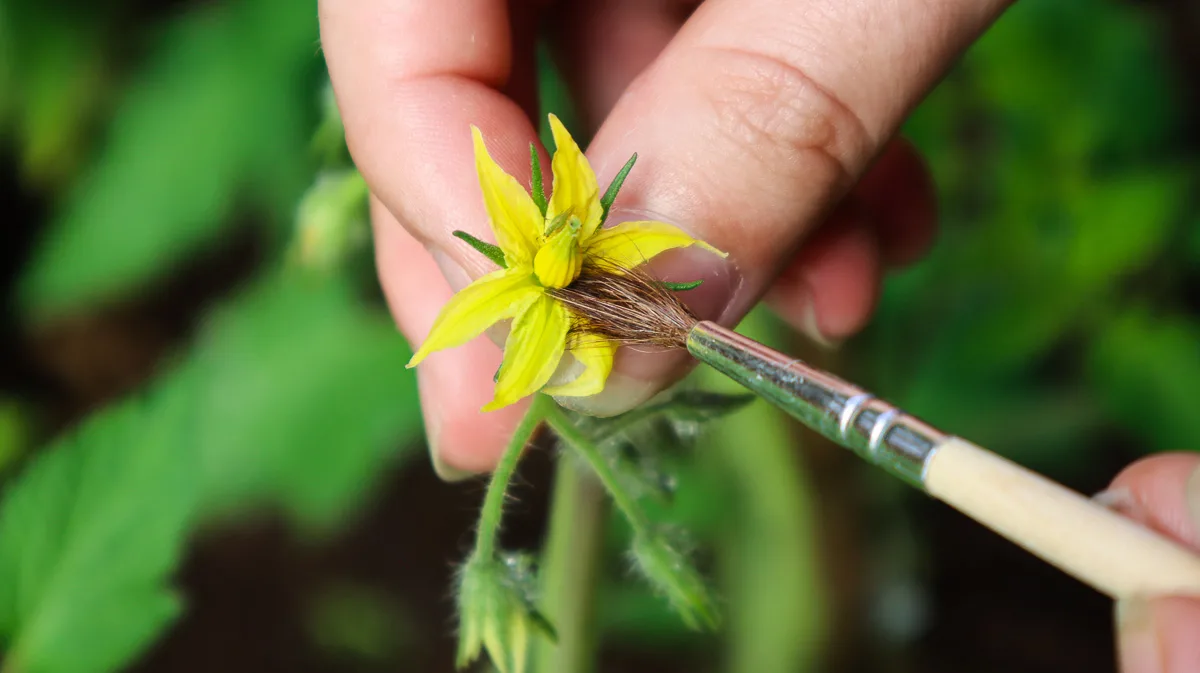
For all the artists out there, you can also put your painting supplies to good use by spreading pollen around your tomato flowers. A natural bristle brush is best to pick up as much pollen as possible.
Pull up the flowers and wipe the brush on the inside of the flower, twirling to collect all the particles. Then, rub the brush on the stigma – the tip of the center of the flower – to transfer the pollen where it needs to be.
If using the paintbrush on multiple varieties, clean it between each use to avoid cross-pollination.
Use A Toothbrush
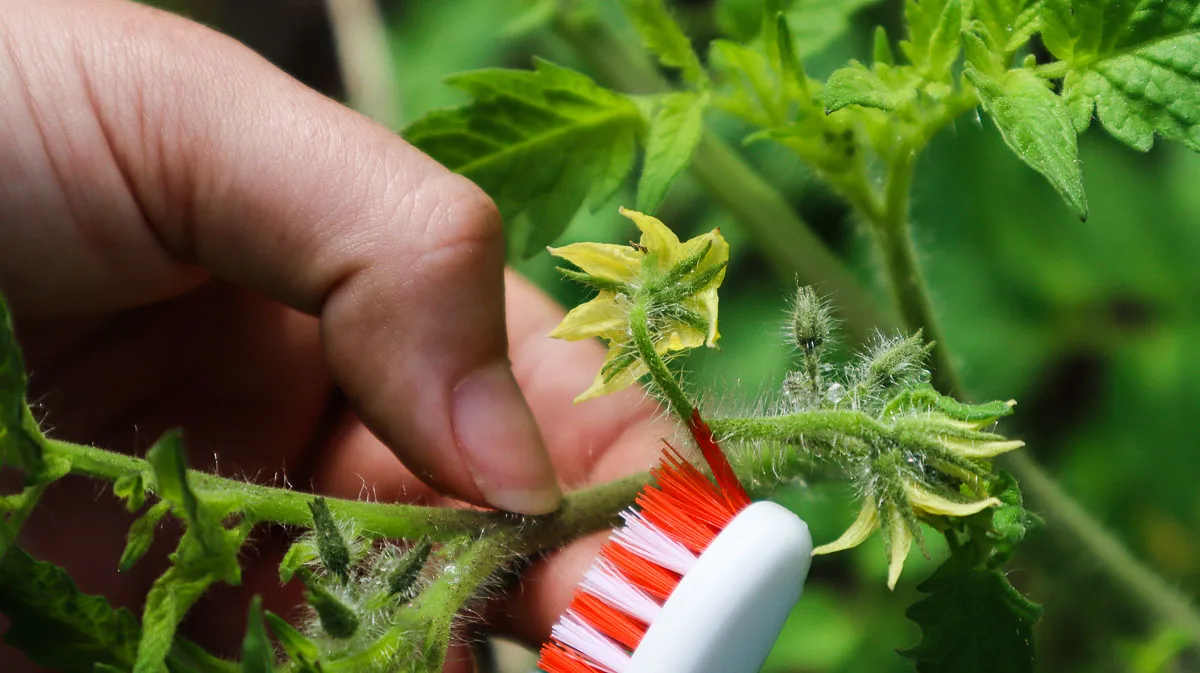
To mimic the movement of our beloved pollinators, all you need is a vibrating toothbrush. Hold it on the ends of the blooms to vibrate the flowers and shake the pollen in place. You only need a few seconds of contact to do the job – one of the quickest and most effective methods you can use.
By replicating the buzzing of a bee, the anthers are encouraged to release as much pollen as possible, dropping onto the stigma. You can also collect any pollen that falls to apply by hand for more precision.
Use Cotton Swabs
Much like a paintbrush, the small fibers of a cotton swab are perfect for picking up pollen. You can also rub the ends gently between your fingers to loosen some of the fibers and increase the amount of pollen you pick up. Then, wipe the swab on the inside of the flower as you would with a paintbrush, tapping the end on the stigma once collected to pollinate.
If you’ve used a toothbrush and collected some pollen in a small container, you can also use the cotton swabs to apply it to the stigma directly, ensuring as much contact as possible.
While hand-pollinating is not a necessity, it is certainly a worthwhile task for anyone struggling with yield, or anyone that simply wants to get the most out of their plants.

